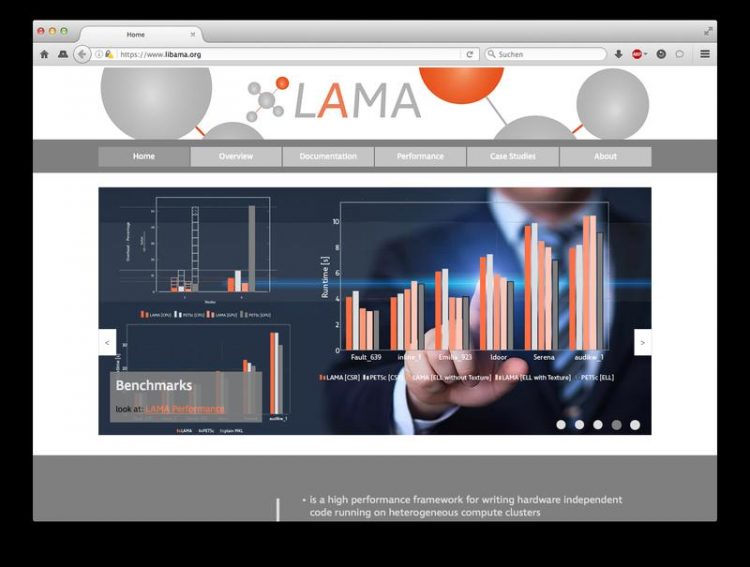LAMA 2.0 accelerates more than just numerical applications

www.libama.org Fraunhofer SCAI
By offering DSL-like C++-Syntax LAMA encourages writing of hardware-independent code. The framework allows the management of data on heterogeneous and distributed system architectures. These can range from embedded “System on a Chip” (aka SoC) devices to highly-parallel Supercomputers.
Consequently, LAMA offers full cluster support. Kernel management is provided with ready-to-use modules encapsulating interfaces to Intel® MKL and Nvidia® cuBLAS/cuSPARSE (targeting all multicore CPUs, Nvidia® GPUs, and Intel® Xeon® Phi™). For the purpose of extending LAMA, the framework supports the integration of custom modules.
Hence, it greatly facilitates the development of fast and scalable software for nearly every system on every scale. LAMA accelerates the time-to-market for new product developments significantly, reduces the time spent in maintaining existing code, and offers up-to-date hardware compatibility for even the latest architectures.
Typically, LAMA targets applications with needs in numerical mathematics (such as CFD and FEM simulation). Furthermore, LAMA 2.0 integrates methodology in the areas of optimization (e.g. for seismic imaging), computer vision, and deep learning.
It is available with an industry-friendly dual licensing model (AGPL for open source or individual agreements for other interests).
Media Contact
All latest news from the category: Information Technology
Here you can find a summary of innovations in the fields of information and data processing and up-to-date developments on IT equipment and hardware.
This area covers topics such as IT services, IT architectures, IT management and telecommunications.
Newest articles

Innovative vortex beam technology
…unleashes ultra-secure, high-capacity data transmission. Scientists have developed a breakthrough optical technology that could dramatically enhance the capacity and security of data transmission (Fig. 1). By utilizing a new type…

Tiny dancers: Scientists synchronise bacterial motion
Researchers at TU Delft have discovered that E. coli bacteria can synchronise their movements, creating order in seemingly random biological systems. By trapping individual bacteria in micro-engineered circular cavities and…

Primary investigation on ram-rotor detonation engine
Detonation is a supersonic combustion wave, characterized by a shock wave driven by the energy release from closely coupled chemical reactions. It is a typical form of pressure gain combustion,…



